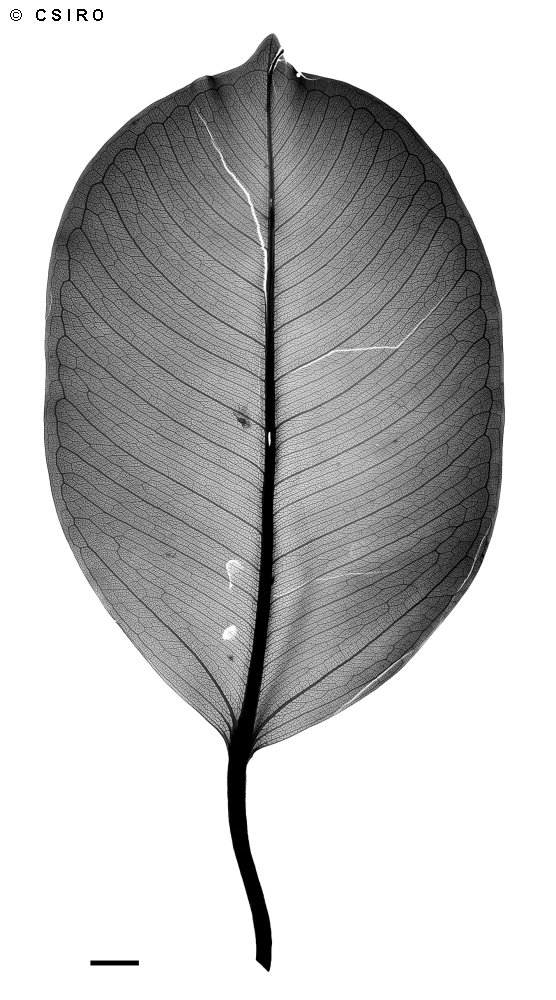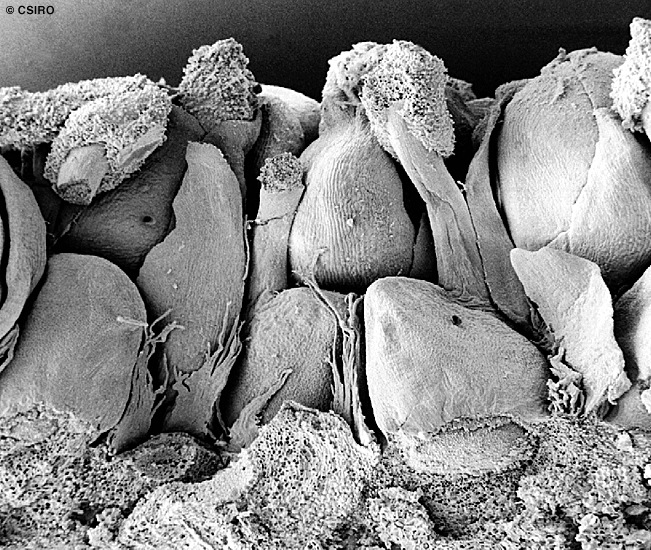Australian Tropical Rainforest Plants - Online edition
Ficus crassipes F.M.Bailey







Bailey, F.M. (1889) Report on New Plants, Preliminary to General Report on Botanical Results on Mestons Expedition to the Bellenden-Ker Range : 2. Type: Scrubs, Harveys Creek, Russell River, F. M. Bailey & E. Meston s.n.; holo: BRI.
Fig; Fig, Banana; Fig, Round Leaf Banana; Figwood; Banana Fig; Round Leaf Banana Fig; Round-leaf Banana Fig
A strangling fig.
Figs on a short but very thick (up to 15 mm diam.) peduncle, figs ellipsoid, about 40-70 x 13-30 mm, apex beaked (beak about 4-7 mm long). Orifice ending in a triradiate slit and closed within the body of the fig by inflexed, but not interlocking, internal bracts. Seeds about 4 x 2 mm. Embryo about 2 mm long, cotyledons rolled. Radicle straight, about 1 x 0.5 mm.
Cotyledons almost orbicular, about 4-7 mm diam., base truncate or cordate. At the tenth leaf stage: leaf blade lanceolate to cordate, apex acute, margin crenate on the upper 2/3 of the leaf blade, glabrous on the upper surface; petioles glabrous, about 2/3 the length of the leaf blade; petioles produce a milky exudate. Stipules narrowly triangular, sheathing the terminal bud, glabrous. Seed germination time 12 to 19 days.
Fallen fruit eaten by Cassowaries and Musky Rat-kangaroos. Cooper & Cooper (1994).





